- Home
- John Norman
Tribesmen of Gor coc-10 Page 5
Tribesmen of Gor coc-10 Read online
Page 5
Larma and tospits are also grown at the oases, in small orchards. Some rep is grown, for cloth, but most cloth comes to the oases from caravans. Kaiila and verr are found at the oases, but not in great numbers. The herds of these animals are found in the desert. They are kept by nomads, who move them from one area of verr grass to another or from one water hole to another, as the holes, for the season, go dry. Smaller water sources are used in the spring, for these are the first to go dry, larger ones later in the year. No grass grows about these water holes because many animals are brought to them and graze it to the earth. They are usually muddy ponds, with some stunted trees about, centered in the midst of an extensive radius of grassless, cracked, dry earth. Meat, hides, and animal-hair cloth are furnished to the oases by the nomads. In turn, from the oases the nomads receive, most importantly, Sa-Tarna grain and the Bazi tea.
They receive, as well, of course, other trade goods. Sa-Tarna is the main staple of the nomads. They, in spite of raising herds, eat very little meat. The animals are too precious for their trade value, and their hair and milk, to be often slaughtered for food. A nomad boy of fifteen will often have eaten meat no more than a dozen times in his life. Raiders, however, feast well on meat. The animals mean little to them and come to them cheaply. Tea is extremely important to the nomads. It is served hot and heavily sugared. It gives them strength then, in virtue of the sugar, and cools them, by making them sweat, as well as stimulating them. It is drunk three small cups at a time, carefully measured.
I finished the cup of water and handed the cup back to the water carrier. He bowed, grinning, the bag, swollen and bulging, damp on his shoulder, and. hooking the cup on his belt, backed away. “Water!” he called. “Water!”
I blinked my eyes against the heat and glare of the sun. The buildings of Tor are of mud brick, covered with colored, often flaking, plasters. But now, in the sun, and the dust, raised by the people in the streets, everything seemed drained of color. I would soon have to buy appropriate garments. In such a city I was too conspicuous.
I made my way toward the bazaar.
I knew the light lance, and the swift, silken kaiila. I had learned these with the Wagon Peoples. But I did not know the scimitar. The short sword, now slung over my left shoulder, in the common fashion, would be of little use on kaiila back. The men of the Tahari do not fight on foot. A man on foot in the desert, in warfare, is accounted a dead man.
I looked up at the buildings. I was now in the shade, descending a narrow, steep street, toward the bazaar. The buildings in Tor are seldom more than four stories high, which is about as high as one may build safely with beams and mud brick. Because of the irregular topography of Tor, however, which is a hilly, rocky area, like most of the Tahari terrain, many of the buildings, built on shelves and rises, seemed considerably higher. These buildings, on the outside smooth and bleak, save for occasional narrow windows, high, not wide enough to admit a body, abut directly on the streets, making the streets like deep, walled alleys. In the center of the street is a gutter. It seldom rains in Tor, but the gutter serves to collect waste, which is often thrown into it, through open doors, by slaves. Within these walls, however, so pressing upon the street, I knew there were often gardens, walled, well-watered, beautiful, and cool, dark rooms, shielded from the heat and sun, many with superb appointments. Tor was, as Gorean cities went, rich, trading city. It was headquarters for thousands of caravan merchants. In it, too, were housed many craftsmen, practicing their industries, carvers, varnishers, table makers, gem cutters, jewelers, carders, dyers of cloth, weavers of rugs, tanners, makers of slippers, toolers of leather, potters, glaziers, makers of cups and kettles, weapon smiths, and many others. Much of the city, of course, was organized to support the caravan trade.
There were many walled, guarded warehouses, requiring their staffs of scribes and guards, and, in hundreds of hovels, lived kaiila tenders, drovers, and such, who would, at the caravan tables, when their moneys had been exhausted, apply, if accepted, making their mark on the roster, once more for a post with some new caravan. Guards for these caravans, incidentally, were usually known by, and retained by, caravan merchants between caravans. They were known men. Tenders and drovers, on the whole, came and went. Elaborate random selection devices, utilizing coins and sticks, and formulas, were sometimes used by merchants to assure that applying tenders and drovers were selected, if they were not known, by chance. Tenders and drovers were assured that this was to insure fairness.
Actually, of course, as was well known, this was a precaution against the danger of hiring, en bloc, unwittingly, an organized group of men, who might, prior to their hiring, have formed a plan to slay the guards and merchants and make off with the caravan. Tenders and drovers, however, like men generally, were an honest sort. When they returned to Tor, of course, they had been long in the desert. At the end of the trip they received their wages. Sometimes, not even a hundred yards from the warehouses, these men would be met by enterprising cafe owners, praising the advantages of their respective establishments. The owners of these cafes, usually, would bring with them a chain of their girls, stripped, as free women in the Tahari districts may not be, purportedly a typical selection of the stock available.
“In my house,” he would call, indicating one or another of the girls, “rent the key to her chains.”
But generally the men would proceed past these enticements, which were, from what I saw, far from negligible, and hurry toward their favorite cafes and hostels, whose wares, I gathered, did not need such blatant advertisement, whose worth, and capacities for total and complete satisfaction were apparently well known. Certain of these cafes I might mention. The Silken Oasis is well known, even in Ar, but it is extremely expensive; in the middle range of price are the Golden Collar and the Silver Chain, both under the same management, that of a Turian named Haran; good, relatively inexpensive cafes are the Thong, which I would recommend, the Veminium, the Pomegranate, the Red Cages and the Pleasure Garden. These various establishments, and more than forty others, from the point of view of tenders and drovers, have one thing in common. They succeed in separating, with celerity and efficiency, a fellow from his money. I do not feel this way myself. I think most of them, with the exception of the Silken Oasis, are reasonable. The drover’s objection, I think, is largely a function of the fact that he does not have a great deal of money to spend. What there is, accordingly, seems rapidly diminished. Tenders and drovers often proceed from one cafe to the other, for several nights. The wages for a caravan trip, which often takes months, commonly will last the fellow about ten days, or, if nursed out, some fifteen days. They are, of course, a rather pleasant ten or fifteen days. At the end of this time, after a day or so of some physiological discomfort, usually violent nausea and blinding headaches, it is common to find the man again back at the tables, once more attempting to vend his services to the master of a caravan.
A fellow walked past me, carrying several vulos, alive, heads down, their feet tied together. He was followed by another fellow, carrying a basket of eggs.
I followed them, as they would be going to the market streets, near which was the bazaar.
The water in an oasis is, of course, at its lowest point. Residences, at an oasis, are built on the higher ground, where nothing will grow. It is the valley, naturally, which, irrigated, usually by hand, though sometimes with clumsy wooden machinery, supports the agriculture. Land, at an oasis, which will grow food, is not wasted on domiciles. Tor, rather similarly, though few crops were grown within its walls, was built high, about its water, several wells in the deepest area in the city. The architecture of Tor, in concentric circles, broken by numerous, narrow, crooked streets, was a function of the radius from its wells. An advantage of this municipal organization, of course, though it is scarcely a matter of intentional design, is that the water is in the most protected portion of the city, its center. Tor’s water, I might mention, was ample to her needs. Though I saw few of them, she boasted many shaded gardens
.
Water for these gardens, by contract with slave masters, was carried by chains of male slaves and emptied into house cisterns, whence, later, by house slaves, it would be taken in cans and sprinkled carefully, foot by foot, throughout the garden.
I was now in the lower part of the city.
“Water!” I heard. “Water!”
Behind me, turning, I saw the water carrier, he from whom I had purchased a cup of water earlier.
A woman, veiled, passed me. She held a baby inside her cloak, nursing it.
I continued down the sloping street, toward the bazaar and market, I had arrived in Tor four days ago, after first taking tarn to Kasra. There I had sold the bird, for I did not wish to be conspicuous in Tor, as would surely as a tarnsman. From Kasra I had taken a dhow upriver on the Lower Fayeen, until I reached the village of Kurtzal, which lies north, overland, from Tor. Goods which are to be transported from Tor to Kasra sometimes are first taken overland to Kurtzal, and thence west on the river. Kurtzal is little more than a loading and shipping point. In Kasra, descending upon my tarn, I had been a warrior. A mercenary tarnsman. As a portion of my assumed disguise, uncollared, lashed on her back across my saddle, had been the body of a naked girl. She was blond. She was barbarian. She could not even speak Gorean. I was congratulated on my catch.
I visited one of the metal workers, to purchase a collar for my prize. None, Samos and I suspected, would regard one with such a wench, so clumsy, so untaught, so obviously new to slavery, as being upon the business of Priest-Kings. She was simply a caught girl, picked up by a tarnsman with ease, simply to be used for a time and then discarded for a few tarn disks. “I took her from a slaver’s camp,” I told the metal worker. “I see her brand is fresh,” said the metal worker. It was true. She had not been branded in Teletus.
Sometimes a girl is not branded until she is first sold. There are various brands. Sometimes it pleases the master to decide with which the girl will be marked. Within an hour, however, of her arrival at the house of Samos, the girl had been sent to the branding chamber. The standard Kajira mark, as was the house policy, was put upon her.
Masters, incidentally, seldom brand their own slaves. To brand a girl well demands a sure hand, and, usually, experience. In training a man to use the iron slavers always give him poorer women at first, sometimes having him mark them more than once, until he becomes proficient. Usually by the fifteenth or the twentieth woman, the man is capable of marking them deeply, precisely and cleanly. It is important for the girl’s thigh to be held immobile: sometimes it is held by more than one man; sometimes it is bound to a wagon wheel; sometimes, in the house of slavers, a heavy, vise equipped, metal branding rack is used.
The girls are usually branded impersonally, perfunctorily, as cattle. Though they feel their mark intensely physically, it is felt, interestingly, even more intensely, more profoundly, psychologically; not unoften it, in itself, radically transforms their self-images, their personalities; they are then only slaves, not permitted their own wills, rightless, at the bidding of masters; the mark is an impersonal designation; this is understood by the girls; when she is marked she understands herself not to be marked by a given man for a given man, to be uniquely his, but rather, so to speak, that she is marked for all men; to all men she is a slave girl; usually, of course, only one among them, at a given time, will be her master; the brand is impersonal; the collar is intensely personal; the brand marks her property; the collar proclaims whose property she is, who it is who has either taken, or paid for, her; that the brand is an impersonal designation of an absence of status in the social structure is perhaps another reason why masters do not often brand their own girls; the brand relationship to the free man is institutional; the collar relationship, on the other hand, is an intensely personal one; it is not uncommon for masters to pride themselves on the depth with which they know their slave girls; this depth is far greater in my opinion than that with which the average husband of Earth knows his wife; the slave girl is not simply someone with whom the man lives; she is very special to him; she is a treasured possession; he owns her; he wants to know, profoundly and deeply, the background, history, the mind, the intelligence, the appetites, the nature and the dispositions of his lovely article of property; this knowledge, of course, puts her more at his mercy; by making it possible for him to manipulate her feelings, exploit weaknesses, drop asides, etc., she in the helpless condition of slavery, it gives him greater power over her. For example, it is common for a master to force his girl to speak at length and in detail to him of the secret sides of her nature, explaining and elaborating on her fantasies: if she is literate, she may be forced, naked, collared, on her knees at a small table, sometimes with her ankles shackled, to write them out; this supplies the master, of course, with abundant materials which may be used by him to make her further and more helplessly his; sometimes the girl attempts to deceive the master; it is not difficult to detect inauthenticity in such matters; she is then beaten; too, she may at times be ordered to invent fantasies, sometimes of a certain type; these, too, for she has invented them, are, to an astute master, instructive; these intellectual, emotional exercises, performed by the girl under a condition of slavery, particularly if coupled with an enforced exercise regime, posings under male surveillance, and such, can do much to sensitize her to her collar; they awaken her body and, of equal importance for the Gorean, though not for the Earthling, who sees sex with the perception of a hippopotamus, as a matter of body rubbings, her fantastic imagination and mind; she becomes curious, soon, about the deeper implications of what she is, a mere article of her master’s property; then, with authority, with assurance and power, to the depth and height of her mind and imagination she is taught; the slave girl experiences a paradox of freedom; the free woman is physically free, but miserable, fighting to be what she is not; the slave girl, physically in bondage, even to the collar, sometimes chains, is given no choice by men but to be totally and precisely what she is, slave; such women, the slave girls, interestingly, are almost always joyful and vital; they are, paradoxically, in their feelings and emotions, liberated; they are not pinched, not psychologically restrained; why this should be I do not know; to see such women, their heads high, their eyes bright, their bodies, their movements, beautiful, as no Earth woman would dare to be, is quite pleasurable; some of them are so insolent, so proud of their collars, that I have cuffed them to my feet to remind them that they are only slaves.
It had been fortunate for us that the girl’s brand had been relatively fresh, that she had been marked in the house of Samos and not on Teletus.
This made it more plausible that she was a recent prize, abducted, as I had averred to the metal worker, from the camp of a slaver. We could, of course, have taken another girl from the pens of Samos. This one, however, seemed ideal.
She was obviously untrained, a clumsy wench, as stupid and raw, aside from a few rapings, as an uncooked piece of bosk meat, new to slavery. Furthermore, ideally, she could not yet speak Gorean. She could, thus, do nothing to betray or confound, inadvertently or otherwise, by word or glance, our plans. She knew nothing. She was only a part of my disguise. Nonetheless it was with pleasure that I snapped the collar, marked in the name of Hakim of Tor, as she, kneeling, naked, looked up at me in anger, on the small, lovely throat of the former Miss Priscilla Blake-Allen, of Earth.
But when I descended the narrow gangplank of the dhow, which I took upstream from Kasra to the village port of Kurtzal, it was not as a tarnsman. The tarn I had sold in Kasra, for four golden tarn disks. I wore now the rags of a drover of kaiila. Bent over, carrying a grossly woven bag of kaiila-hair cloth, filled with accouterments, I set foot on the cracked boards of the Kurtzal dock.
Moments later I stood inland, ankle deep in the white dust. Following me down the gangplank, clad in a black haik, could have been only my companion, the pitiful free woman who shared my poverty. The haik, black, covers the woman from head to toe. At the eyes, there is a tiny bit of black
lace, through which she may see. On her feet were soft, black, nonheeled slippers, with curled toes, they were, decorated with a line of silver thread.
Beneath the haik none needed know the woman was naked and wore a collar.
We took a salt wagon, empty, to Tor from Kurtzal.
There was another reason I had brought Miss Blake-Allen, as we may perhaps speak of her for purposes of simplicity, to the Tahari districts. Cold, white-skinned women are of interest to the men of the Tahari. They enjoy putting them in servitude. They enjoy, on their submission mats, turning them into helpless, yielding slaves. Too, blue-eyed, blond women are, statistically, rare in the Tahari districts. Those that exist there have been imported as slaves. Given her complexion and coloring, I thought, and Samos concurred, we could get a good price for the wench in Tor, or in the interior, at an oasis market. We had little doubt that the men of the Tahari would pay high for the body and person of Miss Blake-Allen. It had entered my mind, too, that it might prove most profitable, under certain conceivable circumstances, to exchange her for information.
In Kasra I had learned the name, and father, of the boy who had found, in pursuing a kaiila, the rock on which had been inscribed ‘Beware the steel tower’. His name was Achmed, and his father’s name was Farouk, who was a Kasra merchant. I had failed to contact them in Kasra, as I had planned, but I had learned that they were in the region of Tor, purchasing kaiila, for a caravan to the kasbah, or fortress, of Suleiman, of the Aretai tribe, master of a thousand lances, Ubar of the Oasis of Nine Wells.
A merchant passed me, climbing the stones of the street. He wore a striped, hooded, sleeved, loose robe, a djellaba. The striping was that of the Teehra, a district southwest of Tor, bordering on the Tahari. Following him, in a black haik, was a woman. Suddenly I was startled. As she passed me, her stride small and measured, I heard the clink of light chain, the sound of ankle bells. She was slave. She turned her head, briefly, to look at me; I saw her eyes, dark, through the tiny opening in the haik, through the tiny, black-lace screen, about an inch in height and four inches in width. Then, with a rustle of the chain, and the tiny music of her bells, she turned swiftly, following her master.

 Avengers of Gor
Avengers of Gor Kajira of Gor coc-19
Kajira of Gor coc-19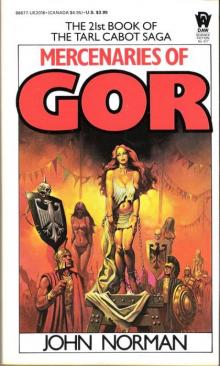 Mercenaries of Gor coc-21
Mercenaries of Gor coc-21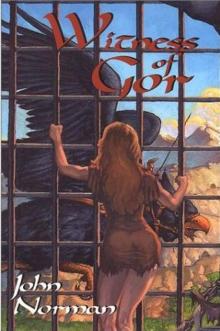 Witness of Gor coc-26
Witness of Gor coc-26 Witness of Gor
Witness of Gor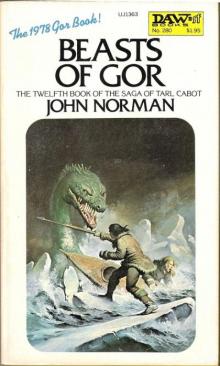 Beasts of Gor coc-12
Beasts of Gor coc-12 Rebels of Gor
Rebels of Gor Mariners of Gor cog[oc-30
Mariners of Gor cog[oc-30 The King th-3
The King th-3 Captive of Gor coc-7
Captive of Gor coc-7 The Captain th-2
The Captain th-2 Vagabonds of Gor coc-24
Vagabonds of Gor coc-24 Explorers of Gor
Explorers of Gor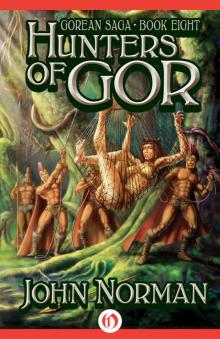 Hunters of Gor
Hunters of Gor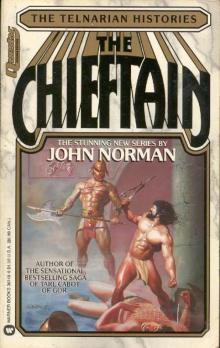 The Chieftan th-1
The Chieftan th-1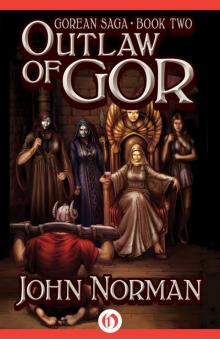 Outlaw of Gor
Outlaw of Gor Priest-Kings of Gor coc-3
Priest-Kings of Gor coc-3 Norman Invasions
Norman Invasions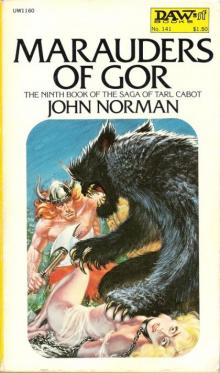 Marauders of Gor coc-9
Marauders of Gor coc-9 Kur of Gor coc-28
Kur of Gor coc-28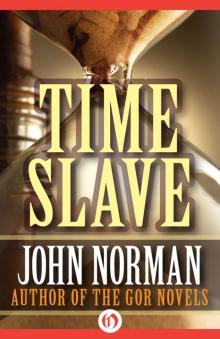 Time Slave
Time Slave The Chieftain
The Chieftain Kur of Gor
Kur of Gor Rogue of Gor
Rogue of Gor The Totems of Abydos
The Totems of Abydos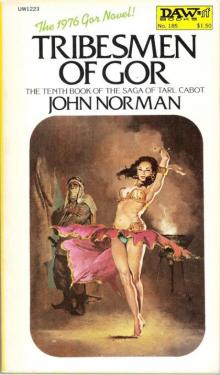 Tribesmen of Gor coc-10
Tribesmen of Gor coc-10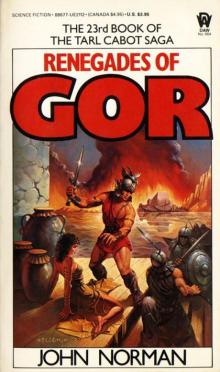 Renegades of Gor coc-23
Renegades of Gor coc-23 The King
The King Tarnsman of Gor
Tarnsman of Gor The Usurper
The Usurper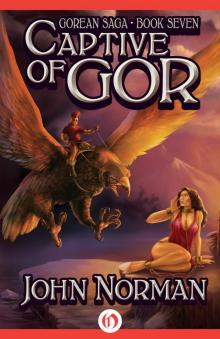 Captive of Gor
Captive of Gor Conspirators of Gor
Conspirators of Gor Smugglers of Gor
Smugglers of Gor Savages of Gor
Savages of Gor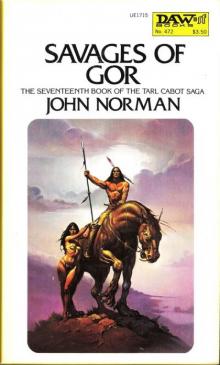 Savages of Gor coc-17
Savages of Gor coc-17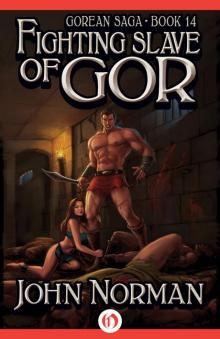 Fighting Slave of Gor
Fighting Slave of Gor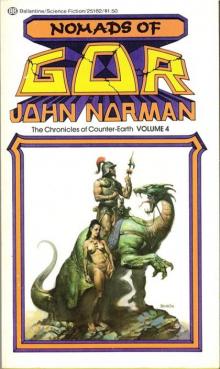 Nomads of Gor coc-4
Nomads of Gor coc-4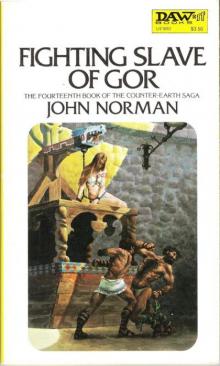 Fighting Slave of Gor coc-14
Fighting Slave of Gor coc-14 Swordsmen of Gor cog[oc-29
Swordsmen of Gor cog[oc-29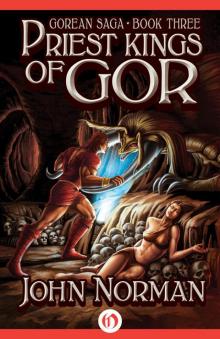 Priest-Kings of Gor
Priest-Kings of Gor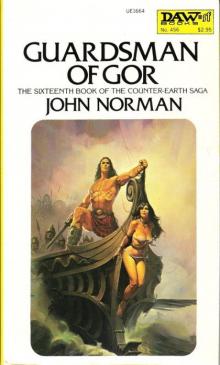 Guardsman of Gor coc-16
Guardsman of Gor coc-16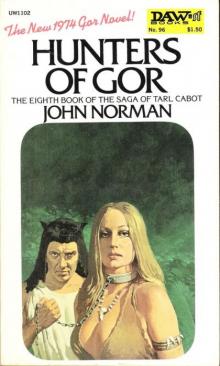 Hunters of Gor coc-8
Hunters of Gor coc-8 Dancer of Gor coc-22
Dancer of Gor coc-22 Prize of Gor coc-27
Prize of Gor coc-27 Conspirators of Gor cog[oc-31
Conspirators of Gor cog[oc-31 Slave Girl of Gor
Slave Girl of Gor Explorers of Gor coc-13
Explorers of Gor coc-13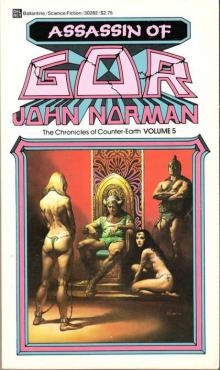 Assassin of Gor coc-5
Assassin of Gor coc-5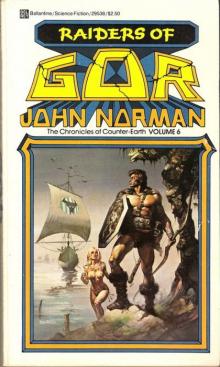 Raiders of Gor coc-6
Raiders of Gor coc-6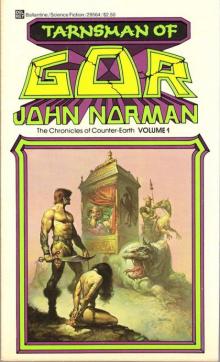 Tarnsman of Gor coc-1
Tarnsman of Gor coc-1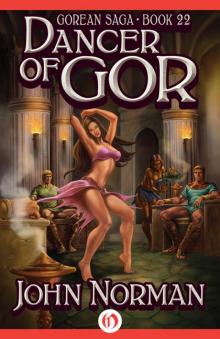 Dancer of Gor
Dancer of Gor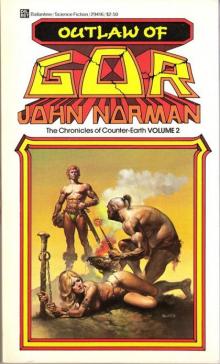 Outlaw of Gor coc-2
Outlaw of Gor coc-2 Guardsman of Gor
Guardsman of Gor Beasts of Gor
Beasts of Gor Ghost Dance
Ghost Dance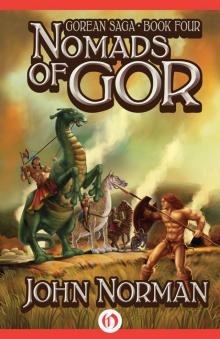 Nomads of Gor
Nomads of Gor Prize of Gor
Prize of Gor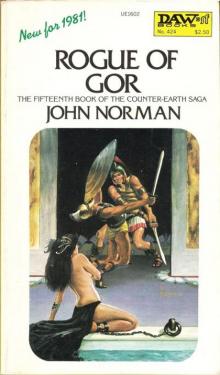 Rogue of Gor coc-15
Rogue of Gor coc-15 Swordsmen of Gor
Swordsmen of Gor